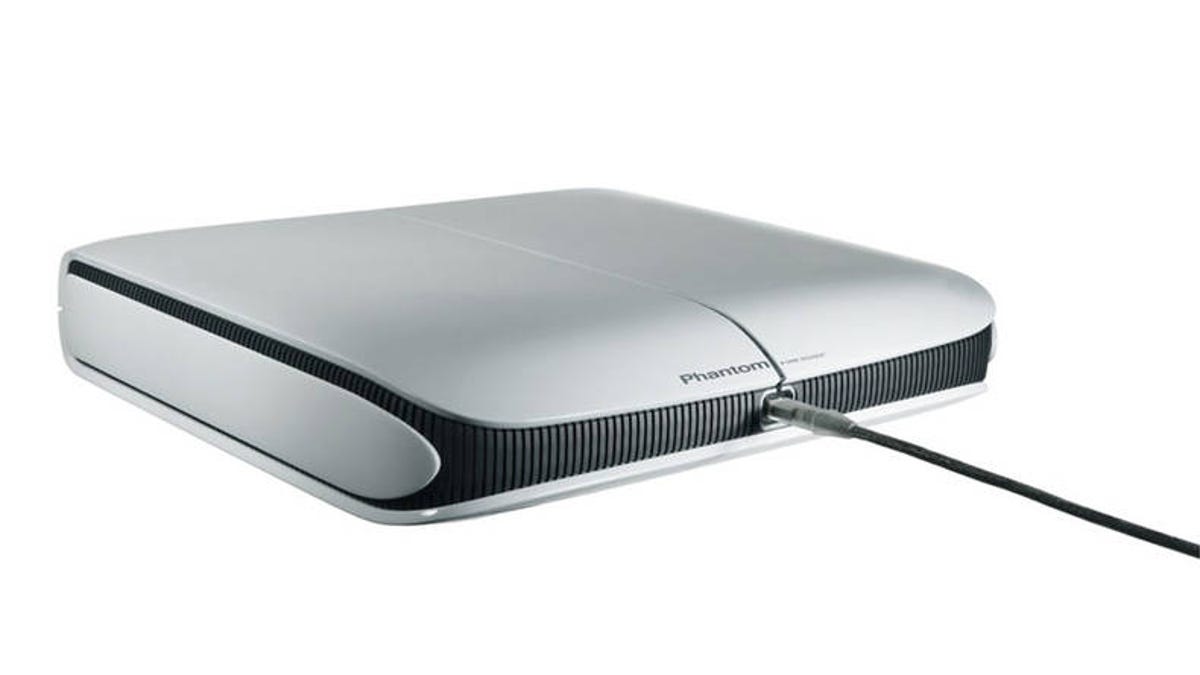Before getting excited about a Valve PC game console, remember the Phantom
All this talk about a PC-based game console reminds me of my encounter with the never-released Phantom several years ago.

With all the excited chatter among gamers about a rumored new PC-based game console from PC game publisher Valve, it may be worth taking a look back at one of the previous attempts to do something similar.
Building a successful living room console that's nearly identical to a desktop gaming PC has long been one of the interactive entertainment industry's unfulfilled goals. After all, the catalog of games for a PC-based console could easily dwarf any proprietary living room console. In a best-case scenario, indie developers could hypothetically release whatever they wanted, without having to get games approved by Microsoft, Sony, or Nintendo (and without cutting those big companies in on the profits). And, of course, there's also the better graphics and more precise controls offered by high-end PC hardware.
Recent reports, first on The Verge, then followed up by Kotaku and others, claimed that Valve, the PC gaming company best known for the Half-Life and Portal games, was working on just such a PC-based console, anchored by an Intel Core i7 processor, 8GB of RAM, and an Nvidia GPU, and controlled with a new hybrid game pad. And, of course, as Valve also controls Steam, a leading online PC game store, there could be a sizable catalog of content potentially in play.
But before anyone gets too excited about being able to play high-end PC games on a big-screen living room TV (I've tried lugging over a gaming laptop and hooking it up via HDMI, but it's just not the same), it would be wise to remember the last time people thought a PC-based console was imminent. The device was called The Phantom, a name that would end up being unintentionally apt. My encounter with the Phantom, from a company then called Infinium Labs, dates back to CES 2005.
At an off-the-show-floor meeting, I saw the Phantom hardware, or at least a box that purported to be a working version. I don't recall any working game demos, but do distinctly recall that hard answers about the exact hardware in the box, and how games would be purchased, installed, delivered, and stored, were all met with vague non-answers.
My biggest issue at the time was one that could also be a stumbling block for any future Valve console. How do you make sure that a new PC game works well with the hardware, when PC games are so finicky to install and configure that even PC gaming vets have trouble installing new games (don't shoot the messenger, PC game fans, that's just how it is). To my best recollection, Infinium's answer was that the company would have to write and release specific configuration settings for every game one hoped to play on the the Phantom, a solution that could prevent many games, especially older and indie ones, from ever being compatible, and would require the company to make a long-term commitment to supplying labor-intensive updates and patches.
In the long run, the Phantom became one of the all-time classic examples of vaporware, and never saw the light of day. Infinium renamed itself Phantom Entertainment in 2006 and subsequently released a keyboard/mouse combo called the Phantom Lapboard.
But for Valve, the same questions remain--how do you make PC games compatible with a sealed set-top box, without a lot of hands-on patching and updating, and without closing the system to the vast majority of PC games? I'm tempted to say a system such as the one used by OnLive might be a better way to get PC games into the living room, hosting the hardware itself, making sure everything plays perfectly, then streaming the visuals to you. But even that is a work in progress, and not yet up to speed for serious PC gamers.
Can a living room PC gaming console work? Or does your entertainment cabinet already have too many consoles hooked up? Let me know what you think in the comment section below.

